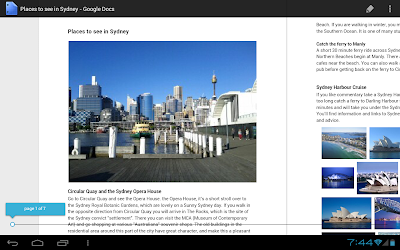Meeting citizen demand in one of the nation’s busiest library networks
Posted:
Wednesday, February 29, 2012
Editors note: Today’s guest blogger is Gib Van Cleve, information technology services manager at St. Louis County Library (SLCL). He and the staff at SLCL adopted Google Apps for Government, and have found many innovative uses for Google tools to help the library’s 20 branches run more efficiently and better serve citizens.
St. Louis County Library (SLCL), with 20 branches, represents Missouri’s largest and busiest library network. We serve a large community eager to consume digital and hard-copy content, from learning games to classic novels, and that requires behind-the-scenes technologies to manage circulations and ensure efficient citizen services. But, as we grew and our collections expanded, we needed tools that could enable our staff to collaborate more efficiently to bring more transparency to the library’s operations.
In the past, managing libraries required a lot of phone calls and spreadsheets emailed back and forth. Today, that’s no longer the case. We have a small yet nimble technology group of 12 people, and we’ve been able to increase efficiency and improve citizen services by adopting Google Apps for Government. We are honored that some of our employees have been recognized as Government Transformers for their creative usage of Google Apps.
To allow citizens to check out an item at one location and return it at another, we started supporting floating collections. It’s not easy balancing collections across multiple facilities to ensure that items are available when and where the public needs them. Our community services administrator Eric Button created a Google spreadsheet to manage floating collections systematically, tagging facilities green if they have space, yellow if their items are balanced, and red if their shelves are full. This new tool eliminates emailing back and forth and allows us to see instantaneously where to send items to meet demand.
We have found many uses of Google Apps for a broad library network. Amy Gibbons and other members of our service desk staff manage an inventory of 900 PCs throughout our library network using Google Docs. Our libraries run better and more cost-effectively so we can meet citizen requirements for educational and entertainment content—and—trust us, we’re discovering more and more uses for Google Apps to become more efficient and effective!
















